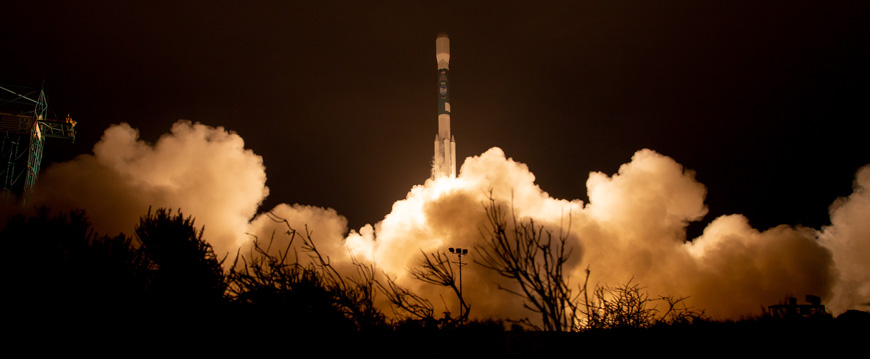
ICESat-2 is a follow-on project to the original ICESat mission, which launched in January 2003 and operated for seven years before being retired and decommissioned in 2010. The original satellite was the benchmark mission for measuring the height of ice sheets, but it also experienced some technical difficulties that limited its operations. NASA’s Operation IceBridge, the largest airborne survey of Earth's polar ice, helped scientists close the gap between the two ICESat missions.
The new ICESat-2 spacecraft has been redesigned and represents the latest in cutting-edge technology to study Earth’s frozen regions, known as the cryosphere. The satellite has an Advanced Topographic Laser Altimeter System (ATLAS) which will send 10,000 laser pulses a second to Earth’s surface and measure the height of ice sheets, glaciers, sea ice, and vegetation by calculating the time it takes the pulses to return to the spacecraft.
ICESat-2 is currently orbiting the Earth from an average altitude of 290 miles. The door to the ATLAS instrument was successfully opened on Sept. 29, and on the following day the laser was turned on and began firing its first photons. The first returns from Antarctica came in overnight on Oct. 3.
Borsa, an assistant professor at Scripps, will be involved with the calibration and validation of the ICESat-2 laser system. He is currently serving as a liaison between the ICESat-2 science team and NASA’s Goddard Space Flight Center. The task of calibrating and validating the instrument’s measurements is a critical component to the overall success of the mission.
The entire science team now awaits the trove of data that is bound to begin pouring in.
“We just got the first photons from the ground, so we know that the instrument is working as designed,” said Fricker, noting there is still much work to be done as a member of the science team. “In about two weeks’ time it will be all hands on deck to look at the data.”
Fricker originally came to Scripps from Tasmania in 1999 to work as a postdoctoral scholar with geophysicist Jean-Bernard Minster, a member of the original ICESat science team who helped contribute to the mission’s scientific goals. She said that Minster involved her in many of the ICESat Science Team meetings that he attended at the Goddard Space Flight Center in Maryland.
Now that she serves as an ICESat-2 team member in a similar role, Fricker realizes she has come full circle.
“At the team meeting the day before launch, it struck me how significant these two missions and the people involved in them have been to my career, and as a result to my life and family here in the United States,” she said.
Echoing the sentiments of many in the science community, Fricker and Adusumilli said they are hopeful that the ICESat-2 data will lead to new discoveries about ice sheets and sea ice.
“I was at a scientific conference on the West Antarctic Ice Sheet—the part of Antarctica that is changing rapidly—just two days after launch, said Adusumilli, “and nearly every time someone mentioned an unanswered question, we knew that ICESat-2 could play a crucial role in answering it.”
– Brittany Hook






修改评论